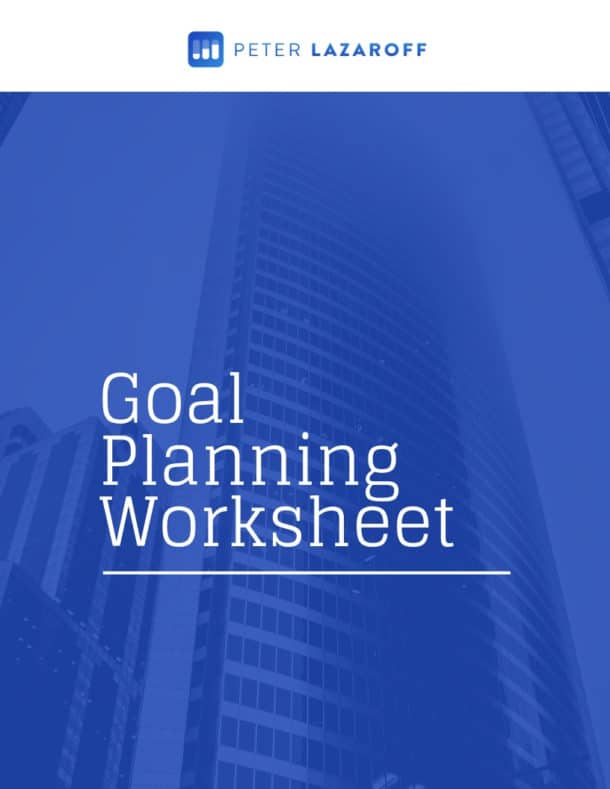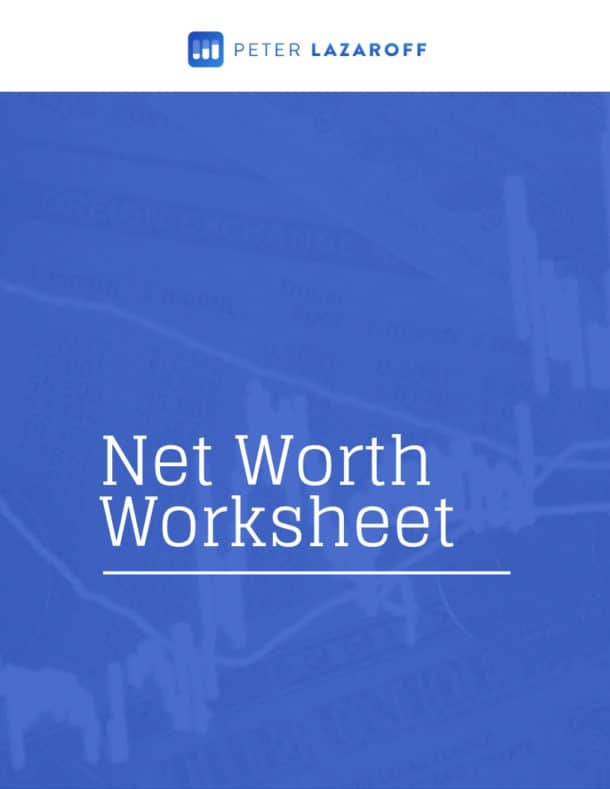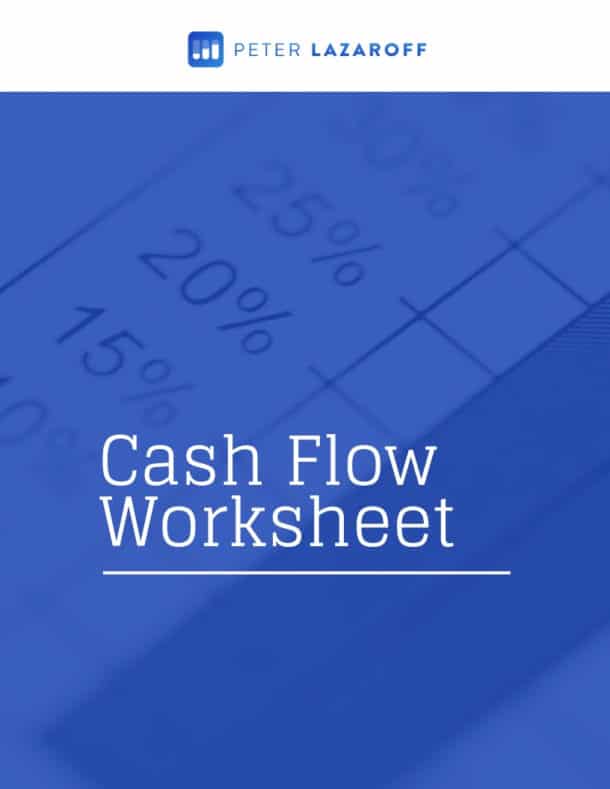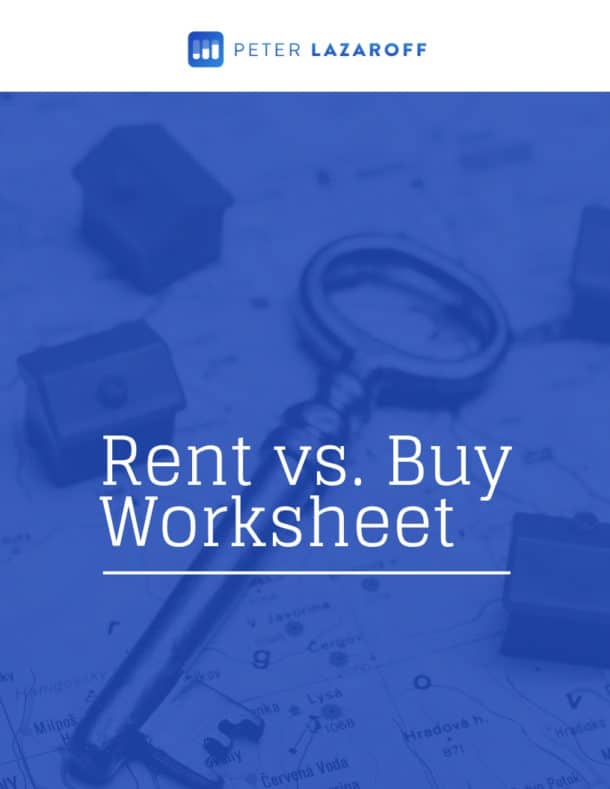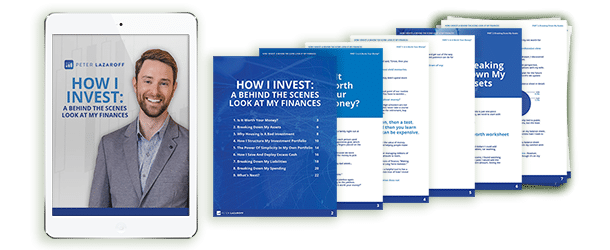Watch Now
Listen Now
In this episode, Nick Maggiulli, author of the acclaimed finance blog Of Dollars and Data, joins me to unpack his groundbreaking new book, The Wealth Ladder. We dive into fresh insights on how your financial strategy should evolve as you climb from one wealth level to the next. Nick reveals eye-opening rules and practical frameworks to help you spend, save, and invest smarter, no matter your current financial position.
Here are notes from our conversation…
Sign up for my newsletter so you can easily reply to my emails with your thoughts or questions for the podcast:
Understanding the Wealth Ladder and Its Origin (02:00)
Nick shares the intriguing origins of the “Wealth Ladder” concept, which initially stemmed from Slack founder Stuart Butterfield’s idea of the “three levels of wealth”—a concept around financial ease at different levels of net worth. This idea was complemented by a memorable Jay Z lyric, “What’s 50 grand to someone like me? Can you please remind me?” At the time of the lyric, Jay Z’s net worth was around $500 million, making $50,000 just 0.01% of his total net worth—a trivial amount.
These inspirations led Nick to develop a comprehensive framework that classifies wealth into distinct levels, enabling tailored financial advice appropriate for each individual’s specific wealth stage. He underscores the importance of recognizing that financial strategies are not universal and should evolve as one’s net worth grows. For instance, just as a fitness coach would provide significantly different guidance to a morbidly obese person versus a highly trained athlete, financial advice should similarly be nuanced and tailored based on an individual’s financial position and goals.
Through the “Wealth Ladder,” Nick aims to move beyond generic financial advice, instead offering a clearer, more personalized approach that helps individuals identify their current position on the wealth spectrum and strategically determine how to reach the next stage effectively.
Introducing the 0.01% Rule: A Game-Changer for Spending Decisions (04:21)
The “0.01% rule” is my favorite idea in Nick’s book. This concept helps individuals determine the trivial amount of spending relative to their net worth—essentially an amount they can spend daily without significantly impacting their financial trajectory. Specifically, by multiplying their total net worth by 0.01% (or dividing by 10,000), individuals can pinpoint the precise figure they can spend comfortably each day.
For someone with a net worth of $1 million, this translates to $100 per day. This rule is rooted in the assumption that a well-managed portfolio can reasonably generate around a 3.7% annual real (net of inflation) return, equating roughly to 0.01% per day. Therefore, spending at this rate should theoretically leave one’s total net worth intact over time, making such spending sustainable.
Practically, this rule helps individuals address everyday financial decisions with confidence—whether deciding between regular or premium groceries, selecting entrées at a restaurant, or considering seat upgrades on a flight. It provides clarity and removes unnecessary anxiety from day-to-day spending choices by grounding them in the broader context of overall wealth.
The 0.01% rule thus becomes a powerful tool for responsible and mindful lifestyle creep, permitting increased spending freedom only after demonstrating sufficient financial discipline and achieving specific wealth milestones.
Explaining the Six Levels of the Wealth Ladder and Responsible Lifestyle Creep (06:14)
The “Wealth Ladder,” structured around six distinct wealth levels based on total net worth (assets minus liabilities). These clear, easy-to-understand levels allow individuals to better contextualize their financial situation:
- Level 1: Less than $10,000
- Level 2: $10,000 to $100,000
- Level 3: $100,000 to $1 million
- Level 4: $1 million to $10 million
- Level 5: $10 million to $100 million
- Level 6: More than $100 million
The majority of American households (about 40%) fall into Level 3, reflecting what many people would identify as middle class. Approximately 20% of households fall into each of Levels 1 and 2, with Level 4 comprising around 18%. Levels 5 and 6 represent significantly smaller segments, with Level 6, in particular, being exceptionally rare—only about 10,000 households nationwide surpass the $100 million mark.
The Wealth Ladder directly relates to tangible lifestyle benefits. Each ascending level represents increased financial freedom and confidence in spending. For instance, reaching Level 2 grants individuals “grocery freedom,” meaning they can shop without worrying excessively about price. Level 3 affords “restaurant freedom,” enabling individuals to order meals without anxiety over the cost. By Level 4, individuals experience “travel freedom,” comfortably making upgrades in their travel plans and accommodations.
Importantly, Nick challenges traditional advice that entirely discourages lifestyle creep, advocating instead for a balanced and responsible approach. He suggests incremental lifestyle improvements, or “creep,” should only occur after demonstrating financial discipline and hitting meaningful net worth milestones. Rather than indiscriminate spending increases, this structured approach to lifestyle creep ensures that additional spending aligns proportionally and responsibly with one’s accumulated wealth, promoting sustainable financial habits and greater overall fulfillment.
Considering Liquid vs. Total Net Worth for Practical Spending (11:30)
In our discussion, Nick Maggiulli highlights an important nuance in applying the Wealth Ladder and the associated 0.01% spending rule—specifically the distinction between liquid net worth and total net worth.
While the Wealth Ladder framework generally classifies individuals based on their total net worth (all assets minus all liabilities), Nick acknowledges that for everyday practical spending decisions, focusing on liquid net worth is often more relevant. Liquid net worth excludes assets that are not easily convertible to cash, such as home equity or certain retirement accounts, making it a more accurate reflection of readily accessible financial resources.
Nick explains that when calculating daily spending limits using the 0.01% rule, relying solely on total net worth could create unrealistic expectations. For example, someone with a total net worth of $1 million might feel they can comfortably spend $100 per day without concern. However, if the majority of their wealth is tied up in home equity or retirement accounts with withdrawal restrictions, their practical ability to comfortably spend at that level may be limited.
To illustrate this nuance, Nick suggests adjusting the calculation to focus more closely on truly accessible, liquid assets—cash, brokerage accounts, and savings that can be readily tapped without penalties or significant delay. He provides practical examples: an individual might have significant wealth on paper due to home equity, but this equity isn’t easily spent without incurring additional debt or expenses. Thus, adjusting for liquidity gives a more realistic spending guideline aligned with actual financial flexibility.
Why Focusing on Income is Crucial in Personal Finance (13:13)
Nick emphasizes that income plays a pivotal role in financial success, arguing that the correlation between income levels and saving capacity is among the strongest in personal finance.
Personal finance content tends to overly criticize spending while overlooking income generation. The reason for this bias might be that excessive spending is highly visible and easy to critique. Everyone can readily point to examples of people who spend lavishly and struggle to build wealth. However, Nick’s data clearly shows that for most individuals, higher income rather than disciplined budgeting alone creates meaningful wealth accumulation opportunities.
Nick’s “1% rule” is a practical guideline for individuals to better evaluate whether certain income opportunities are truly worth pursuing. Unlike the previously discussed 0.01% rule that applies to daily spending, the 1% rule focuses specifically on income opportunities. According to this rule, if a potential opportunity—such as a new client, consulting engagement, side project, or career advancement—won’t increase one’s net worth by at least 1%, it’s probably not worth the time and effort invested.
As individuals grow more financially successful, opportunities multiply, and learning to say “no” becomes increasingly important. Without a clear evaluation method like the 1% rule, it becomes easy to invest time and effort into projects or opportunities that ultimately offer minimal financial benefit relative to the work required.
Further, Nick notes how increased income naturally creates surplus funds that can be effortlessly directed toward savings and investment, often without major changes to spending habits.
Focusing primarily on budgeting or expense reduction, though valuable, has limits. To achieve meaningful progress along the Wealth Ladder, Nick underscores the necessity of proactively enhancing earning power through skill development, career advancement, entrepreneurial endeavors, or strategic investment in income-producing assets.
Insights from the Financial Makeup of Different Wealth Levels (17:19)
By examining the financial makeup of households within each rung of the Wealth Ladder, Nick reveals intriguing patterns about asset ownership, income generation, and the subtle differences that distinguish one level from another.
One of the most striking observations Nick highlights is the substantial reliance of middle-class households (primarily Levels 2 and 3) on their primary residences. Many individuals in these categories have the bulk of their net worth tied up in home equity, often representing as much as 50% to 70% or even more of their total assets.
This concentration in home equity underscores both a strength and a vulnerability—providing stability but limiting liquidity and opportunities for investment diversification.
Conversely, higher wealth levels (Levels 4, 5, and 6) display a distinctly different asset allocation pattern. Wealthier households increasingly invest in income-producing assets such as stocks, bonds, real estate investments, retirement accounts, and business interests.
Nick underscores how the ownership of business interests significantly increases as one ascends the Wealth Ladder, reflecting entrepreneurship and business equity as key drivers of substantial wealth accumulation. In fact, Nick notes the data clearly shows that the highest levels of wealth feature extensive holdings in business interests and income-producing investments, a critical differentiator from lower wealth levels.
Another highlight of Nick’s data is the proportion of income-producing assets at different wealth levels, which classifies assets into two groups: those generating income (such as stocks, bonds, retirement accounts, businesses, and real estate investments) and those that don’t (cash, vehicles, primary residences).
A clear pattern emerges—households in Levels 1 through 3 have less than 25% of their assets in income-producing investments, while those in Levels 4 through 6 have more than 50%. This stark difference vividly demonstrates how wealthier households leverage their financial resources to create self-sustaining income streams, reinforcing the compounding effect that facilitates continuous wealth growth.
Nick also notes how these insights validate key principles from his previous work, reinforcing the importance of systematically acquiring income-producing assets. The data makes explicit the power of compounding and underscores why building wealth through diversified investments is both effective and essential, especially as one ascends higher on the Wealth Ladder.
What Actually Helps People Climb the Wealth Ladder? (21:01)
Climbing the Wealth Ladder largely hinges on two critical factors: income generation and disciplined spending habits.
When comparing households at the same wealth level over a period of a decade, those who transition upwards typically start with significantly higher income levels. Higher initial income provides a powerful lever, making it much easier for households to accumulate wealth, invest in income-producing assets, and sustainably advance to higher rungs of the ladder.
Education, skill development, and career advancement form the primary avenues through which individuals can significantly enhance their earning potential. Nick suggests that improving one’s skills—particularly in high-demand areas—can substantially boost income over time. Nick emphasizes sales proficiency as a particularly lucrative skill, as high-performing salespeople often command exceptional incomes without necessarily requiring extensive formal education.
Another notable insight from Nick’s analysis is the influence of disciplined spending habits on upward financial mobility. He uncovers intriguing evidence of “keeping up with the Joneses,” particularly among middle-class (Level 3) households. In his research, households that remain stuck at Level 3 often exhibit spending habits comparable to households advancing to Level 4, despite having lower incomes.
Lastly, when moving beyond Level 3 (the $1 million mark), Nick explains that incremental growth from traditional income streams (like salary alone) becomes increasingly challenging. At this stage, meaningful wealth growth typically requires embracing entrepreneurship, investing in businesses, or taking calculated financial risks. Nick succinctly summarizes this by stating, “what got you here won’t get you there,” emphasizing the necessity of strategic pivots in financial strategy as one’s wealth increases.
The Relationship Between Money and Happiness (24:03)
As individuals ascend to higher rungs of the Wealth Ladder, spending decisions become increasingly nuanced and impactful. Nick Maggiulli points out that, at elevated wealth levels—typically Level 4 ($1 million to $10 million) and beyond—the most consequential financial choices involve significant, recurring expenses rather than minor, one-time purchases. For households at these upper levels, effective spending isn’t about cutting costs on small-ticket items like groceries or dining out; rather, it revolves around carefully evaluating large-scale expenses such as homes, cars, vacations, or educational costs for children.
Nick explains how sustained high-level spending—such as living in expensive neighborhoods, maintaining luxury vehicles, or consistently staying in upscale hotels—can create significant financial drain if not carefully monitored. Over time, these large, fixed expenditures can substantially impact overall wealth accumulation and financial flexibility, even among affluent households. Therefore, thoughtful financial management at higher wealth levels involves making intentional, informed choices about these big-ticket items. The key is ensuring these larger expenses align closely with personal values and genuinely enhance overall quality of life, rather than serving as symbols of status or measures of success.
Traditionally, many have accepted the widely cited finding that happiness plateaus beyond an annual income of approximately $75,000. However, Killingsworth’s more recent research reveals a far more nuanced reality: happiness does indeed tend to increase as income rises, but with important qualifications.
Killingsworth’s findings, developed further through collaboration with Daniel Kahneman, clarify that higher income primarily boosts happiness for those who are already relatively happy and satisfied with their lives. Additionally, increased income substantially improves the well-being of individuals who are currently experiencing financial hardship or poverty, highlighting money’s power to reduce stress and enhance life satisfaction in contexts of significant financial strain.
However, a critical insight from these studies is that more money is unlikely to remedy deeper emotional dissatisfaction or unhappiness among individuals who are not experiencing poverty or severe financial stress. Essentially, if you find yourself asking, “Will more money make me happier?” and you’re already financially comfortable, the data suggests the answer is likely “no.” For these individuals, the key to greater fulfillment isn’t additional income but instead addressing underlying emotional, psychological, or lifestyle factors causing their dissatisfaction.
Ultimately, Nick’s insights reveal a thoughtful interplay between wealth, spending, and emotional well-being. Money, when used intentionally and wisely at higher wealth levels, has the potential to significantly enhance happiness—but only when spending aligns authentically with one’s values, priorities, and overall life satisfaction.
Resources:
- Of Dollars and Data
- The Wealth Ladder by Nick Maggiulli
The Long Term Investor audio is edited by the team at The Podcast Consultant
Submit Your Question For the Podcast
Do you have a financial or investing question you want answered? Submit your question through the “Ask Me Anything” form at the bottom of my podcast page.
Support the Show
Thank you for being a listener to The Long Term Investor Podcast. If you’d like to help spread the word and help other listeners find the show, please click here to leave a review.
I read every single one and appreciate you taking the time to let me know what you think.
Free Financial Assessment
Do you want to make smart decisions with your money? Discover your biggest opportunities in just a few questions with my Financial Wellness Assessment.

Disclosure: This content, which contains security-related opinions and/or information, is provided for informational purposes only and should not be relied upon in any manner as professional advice, or an endorsement of any practices, products or services. There can be no guarantees or assurances that the views expressed here will be applicable for any particular facts or circumstances, and should not be relied upon in any manner. You should consult your own advisers as to legal, business, tax, and other related matters concerning any investment.
The commentary in this “post” (including any related blog, podcasts, videos, and social media) reflects the personal opinions, viewpoints, and analyses of the Plancorp LLC employees providing such comments, and should not be regarded the views of Plancorp LLC. or its respective affiliates or as a description of advisory services provided by Plancorp LLC or performance returns of any Plancorp LLC client.
References to any securities or digital assets, or performance data, are for illustrative purposes only and do not constitute an investment recommendation or offer to provide investment advisory services. Charts and graphs provided within are for informational purposes solely and should not be relied upon when making any investment decision. Past performance is not indicative of future results. The content speaks only as of the date indicated. Any projections, estimates, forecasts, targets, prospects, and/or opinions expressed in these materials are subject to change without notice and may differ or be contrary to opinions expressed by others.
Please see disclosures here.









